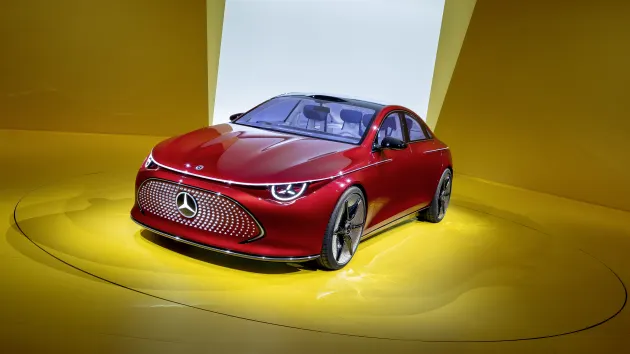Mercedes-Benz and BMW are making significant strides in their efforts to compete with Tesla in the premium electric vehicle market, as they revealed their latest electric concept cars at the IAA auto show in Munich.
Mercedes showcased the Mercedes-Benz Concept CLA Class, while BMW introduced the BMW Vision Neue Klasse. Both of these vehicles are built upon entirely new platforms developed by the German automakers, which will serve as the foundation for their electric vehicle (EV) lineups in the coming years. This marks their most ambitious push into the world of battery-powered automobiles.
While these vehicles are currently in the concept stage, the final production models may differ in appearance. Here’s a closer look at what Mercedes and BMW have to offer:
Mercedes-Benz Concept CLA Class
The Mercedes-Benz Concept CLA Class is constructed on the Mercedes‑Benz Modular Architecture (MMA), a brand-new platform designed specifically for electric cars by the German automaker.
The Concept CLA Class lineup will include four new models, consisting of a four-door coupé, an estate, and two sports utility vehicles (SUVs).
Mercedes claims that the vehicle will have an impressive range of 750 kilometers (466 miles) on a single charge. Additionally, they assert that a 15-minute charge can provide enough power to cover a distance of 400 kilometers.
Mercedes is placing a strong emphasis on the interior and user experience. The company is developing its proprietary operating system, MB.OS, to power various features within the vehicle, including a large dashboard screen and an advanced voice assistant. Furthermore, it will allow integration with third-party apps, such as music and video streaming services.
BMW Vision Neue Klasse
BMW’s response to Tesla comes in the form of the BMW Vision Neue Klasse, which is also based on a new architecture intended for BMW’s future electric vehicles.
The first electric vehicles built on the Neue Klasse architecture are set to enter production in 2025.
Featuring a glass roof and incorporating classic design elements that BMW enthusiasts are familiar with, the BMW Vision Neue Klasse maintains the brand’s signature aesthetic.
One standout feature is the “Panoramic Vision,” a heads-up display projected onto the windshield at the driver’s eyeline. This feature will debut in the Neue Klasse, allowing both passengers and drivers to interact with the display.



 News3 days ago
News3 days ago


 News5 days ago
News5 days ago


 Leaders3 days ago
Leaders3 days ago


 Shows3 days ago
Shows3 days ago


 News3 days ago
News3 days ago


 Docos5 days ago
Docos5 days ago


 Leaders4 days ago
Leaders4 days ago


 Leaders4 days ago
Leaders4 days ago





